

welcome
FROM THE MASTER
Welcome to this issue of Pieces
Something which might not surprise Pieces readers, but which is a relief to me, is that Christ’s is as wonderful as I hoped before starting as Master in September last year The whole community – Fellows, students, staff, and alumni – has been kind and welcoming.
Pieces is one of the main ways we keep in touch with alumni, and I commend this latest edition. We continue our series on volunteers with an article about Project Access, a student-led organisation aiming to demystify the application process for international students. I am glad that Christ’s students who benefited from the project’s work are involved. Students learn best and make the most of their time at Christ’s when surrounded by students from diverse backgrounds.
I am glad that Dr Anna Protasio (Fellow) was able to offer an internship to Christina Lawrence (m. 2021), and that the College was able to support Christina financially Anna’s comments about the value of engaging with young scientists will, I hope, resonate widely Away from academic studies, alumni recall their experiences about (the sadly defunct)
‘Christ’s Films’. Other student clubs and societies continue to flourish.
Dinners in College strengthen our sense of community; Christ’s PhD student Jodie Coates’ accidental discovery of a menu card from Ladies’ Night on 16 December 1954 prompted her to research the people who attended that evening. Her piece reminds us that – astoundingly –women were not regular guests at High Table until the first women were admitted as Fellows in 1979.
I hope you enjoy catching up on news from Christ’s. I urge you to follow us on social media, details of which can be found on the back cover of this issue, where we unabashedly celebrate alumni achievements. Please let us know of any achievements that we can share.
Thank you again for welcoming Olivia and me so warmly At the Matriculation Dinner in October, I predicted that by Christmas new undergraduates would feel like they had joined a community for life. We certainly feel that way. I look forward to meeting as many of you as possible.
3–7
8–9
10–11
12–13
3–7 NEWS
8–9 TESTING IT OUT: A SUMMER INTERNSHIP

10–11 A LOOK BACK AT CHRIST'S FILMS


12–13 LADIES’ NIGHT AT CHRIST’S COLLEGE, 1954
14–15 SPOTLIGHT ON VOLUNTEERS: PROJECT ACCESS
16 OFT REMEMBERING CHRIST'S AND STAY CONNECTED
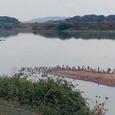
FRONT COVER IMAGE: Third Court at Night, Molly Becker
EDITOR: publications@christs.cam.ac.uk
DESIGN AND PRINT MANAGEMENT: H2 Associates, Cambridge



Congratulations to Dr Camilla Nord (Fellow), who won the European Society for Cognitive and Affective Neuroscience Young Investigator Award for making “substantial and innovative contributions at the intersection of cognitive-affective neuroscience and mental health”. The award is intended to encourage career development and scientific endeavours in the field.


Christ’s inaugural Giving Day, held over 36 hours on 2 and 3 November, was a success! Thanks to over 460 donors, we raised more than £220,000 that will make a significant difference to student life in the College in many ways. By funding our new initiatives, such as the Flexible Undergraduate Grants and Outreach Travel Funds, as well as the established Hardship and General Funds, Giving Day donors will help shape Christ’s for years to come. Thank you to everyone who participated! To read more about Giving Day and its impact, see the enclosed Donor Report.

RECENT PUBLICATIONS




Exposed: The Greek and Roman Body by Professor Carrie Vout (Fellow) was published on 15 September Professor Vout has spoken about the book in sold out events at the Fitzwilliam Museum and at the British Museum in conversation with Professor Mary Beard. The Master, Simon McDonald, published his new book, Leadership: Lessons from a Life in Diplomacy, on 16 November. Ahead of its publication, he discussed his experience in the Foreign Office with Professor David Reynolds (Fellow) as part of the Public and Popular History Seminar in the Yusuf Hamied Theatre on 27 October. If you would like a recording of that talk, contact the Development Office.

On 15 January, Dr Robert Hunt stepped down as Senior Tutor after 14 years in the role. Dr Tom Monie (Fellow) has been elected as Interim Senior Tutor and will be in the position until 31 August 2023. Dr Hunt will remain at Christ’s and continue as Director of Studies in Maths. He is looking forward to having more time to do maths of his own! Thank you to Dr Hunt for many years of excellent service to the College community.

A beautiful stained glass window in the Old Library showing Chaucer as a Canterbury pilgrim commemorates William Walter Skeat, the University’s first Professor of Anglo-Saxon, editor of many medieval texts, and Fellow of Christ’s College until his death in 1912. But look closely in the bottom right corner of the window and you will see a tiny image of a stag! This was used as an artistic signature by Skeat’s grandson Francis Skeat, a stained glass artist. The discovery of this detail by the College Archivist, Dr Lucy Hughes, adds to our knowledge about the window – that it was not just gifted by the family in 1935, but actually created by a family member. Dr Hughes drew attention to the window in her talk for the annual Fisher Society lunch on 13 November, when attendees had the chance to explore the Old Library and see the window for themselves.
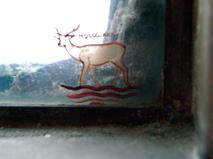
The Christ’s Egyptology website, created by Dr Alex Loktionov (Fellow) to mark the 200th anniversary of the decipherment of Egyptian hieroglyphs and the 100th anniversary of the discovery of the tomb of Tutankhamun, is now live. The website records the history of Egyptology at Christ’s, which stretches back to 1934 when Sir Ernest Alfred Thompson Wallis Budge left a substantial legacy to Christ’s for the purpose of endowing a fellowship to support early-career Egyptologists, and provides useful resources for learning more about Ancient Egypt and the research being done about it. Explore the website at egyptology.christs.cam.ac.uk


19 November saw the first rehearsal of music for a new recording of Hubert Parry’s music. The current choir were joined by choir alumni for a whole day of singing directed by Professor David Rowland, the Director of Music, in the College Chapel, followed by dinner in Hall. The final recording will take place over two days in mid-March in St Michael’s, Cornhill, with former organ scholar Julian Collings (m. 1999) playing.
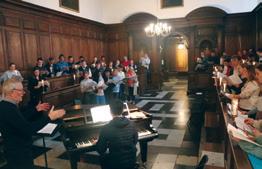
We are delighted to announce that we have reached our target for the Campaign for Christ’s Launched in 2015 by former Master Professor Frank Kelly, this ambitious project to raise £50 million for our development priorities has been a focus of fundraising to ensure Christ’s remains a world-class educational institution. The advancements it has enabled can be seen in the College’s fabric through renovations and new developments, as well as in the lives of Christ’s students and staff via the support it has funded. Thank you to everyone who has taken part by donating or spreading the word over the past years. For more details on the Campaign’s impact on the College, see the enclosed Donor Report.
CONGRATULATIONS TO THE CHRIST’S ALUMNI WHO WERE RECOGNISED IN THE NEW YEAR HONOURS LIST.
Professor Peter Mathieson (m. 1988) has been awarded the title of Knight Bachelor for services to Higher Education. He is currently Principal and Vice-Chancellor at the University of Edinburgh.



Dr David Halpern (m. 1984) has been awarded a CBE for Public Service. He is the chief executive of the Behavioural Insights Team (unofficially known as the Nudge Unit), which he has led since its inception in 2010. His book Inside the Nudge Unit: How Small Changes Can Make a Big Difference was published in 2015.
Rev Canon John Tattersall (m. 1970) has been awarded a CBE for services to the Financial Sector in Greater London. He is Non-Executive Chair of UK Asset Resolution.

Ms Kate Davenport (m. 1993) has been awarded an OBE for services to Foreign Policy She has been Deputy Head of Mission in Prague since October 2022 and was previously posted to Ukraine for four years as Head of Political (Political Counsellor) at the British Embassy in Kyiv
Mr Mark Glossop (m. 1954) has been awarded a BEM for services to the community He writes that the honour ‘came about as a result of my involvement in setting up and opening a community shop in the village after the last shop closed, leaving a community of some 2500 people with a church, a flourishing primary school, two pubs and no shop! We got a small team together, managed to raise enough funding, find a temporary site and set it all up. We were able to persuade the Post Office to fund a PO operation in the shop and I became a sub-postmaster at the age of 82! Happily the shop has flourished, with a huge input by volunteers from our own and neighbouring villages, and our planning consent has been extended for a further five years.’

Professor David Norman (Bye-Fellow) recently published research that found that 'bird-hipped' dinosaurs – including species such as Triceratops – likely evolved from a group of animals known as silesaurs, suggesting an answer to a long-standing mystery in palaeontology. Professor Norman visited Spain last September to give the keynote presentation at the 9th International Dinosaur Symposium held at Salas de los Infantes (Burgos), and he also presented his research as one of the keynote speakers at the 5th Georges Cuvier Symposium that was held at Montbéliard (France) in October

Finch and Baines have settled into their role as College cats. Students, staff, and Fellows are all enjoying seeing them when we pass through Second Court, where they can most often be found. We are also grateful to Dr Harriet Lyon (Fellow) for giving Finch and Baines such a cozy homebase to return to after their adventures around College. Find out what Finch and Baines are up to on Instagram @finch_and_baines.
We regret to report the death of Emeritus Fellow


Dr Douglas Barker on 13 September 2022. Douglas was admitted to the Christ’s Fellowship in 1975. He was a stimulating and enormously effective teacher in the Biological Natural Sciences and was Director of Studies for several decades. Very popular among students, he was also a keen supporter of the sporting fraternity. As well as being President of the Rugby Club and a Senior Member of the Marguerites’ Club, he and his wife Valerie were particular champions of women's sport and the Hippolytans. In retirement, Douglas and Valerie moved to Scotland and enjoyed managing a large croft-holding. His last visit to Christ's was for the celebration of his 80th birthday in 2013.
The College is sad to report the death of Mr Tim Lintott (m. 1971, Lady Margaret Beaufort Fellow) on 12 August 2022. Tim matriculated at Christ's in 1971 to read Law. As well as his success in his academic work, he was a talented rugby player, gaining his Blue and becoming a member of the Hawks’ Club. He went on to become a Partner at Freshfields, the firm that funded the Law Library at Christ's. He dedicated his time to the College generously, serving on the Development Board and acting as Year Group Representative for the 1971 cohort. He was the driving force behind the Spyrou Scholarship, which supports an LLM student studying at Christ’s, and it has now been renamed the Spyrou-Lintott Scholarship in his memory.

Christ’s made a good showing in this year’s Fairbairn Cup, with four novice crews, four experienced student crews, three alumni boats, and one mixed IV all participating. Crustaceans M3, one of the alumni crews, was formed from Christs College Boat Club members who rowed between 1965 and 1969. Since 2007, they have competed every year, only missing a race when ice caused abandonment on the day, making 2022 their 15th year of continuous participation. Congratulations to Crustaceans M3 and to all who rowed!
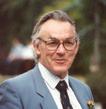
2022 SCHOLARS ACHIEVEMENTS
On 2 December, Christ’s celebrated the achievements of the 2022 Scholars. After excellent exam results which saw Christ’s top the table for both the highest percentage of first-class results and the highest percentage of Good Honours (1sts and II.1s), 76 new undergraduate and postgraduate Scholars were admitted. The official photograph was taken in First Court and the Admission of New Scholars ceremony was followed by tea in the Master’s Lodge. Congratulations to all of this year’s Scholars!

Dr Daniel Field (Fellow) and the Field Palaeobiology Research Group, which includes Christ’s PhD student Klara Widrig (m. 2020), have named a new species of extraordinary fossil bird from the end of the Age of Dinosaurs: Janavis finalidens Janavis was among the last surviving toothed birds on earth 66.7 million years ago and helps clarify the ancestral condition of the modern bird skull. The finding was published in Nature in November 2022.


This year’s Telephone Campaign will take place from 20 March – 3 April. Speak with our student callers to catch up on the latest news from Christ’s, swap stories and memories, and support the College.

TESTING IT OUT: A SUMMER INTERNSHIP IN THE LAB AND IN THE FIELD
This summer, Dr Anna Protasio (Fellow) took Natural Sciences student Christina Lawrence (m. 2021) under her wing during a six-week internship which brought them from Cambridge to the Norfolk coast.

made with the Wash Wader Research Group (WWRG), a group that has been tagging, or ‘ringing’, wild birds on the Wash – a large bay on the coast where Lincolnshire and Norfolk meet – since 1959. Anna’s goal with her research is ‘to use the molecular tools and sequencing and all the background I have from my education to try to address questions that have to do with ecology and conservation’, but she does not have background or experience in ecology and conservation – which is where WWRG came in.
In August 2022, Christina Lawrence found herself standing on the Norfolk Coast holding an oystercatcher. Having signed up to do a lab-based internship in genetics, this was far from what Christina had thought she was getting herself into, but the unexpected turned out to be a lifechanging experience.
Christina had known that she wanted to do a summer internship only a few weeks after she arrived in Cambridge in October 2021. ‘We had a talk in Christ’s from people who had done internships the year before and it sounded really interesting and I wanted to do something similar’, she remembers. As a Natural Sciences student, Christina does lab practicals as part of her degree, but she was interested in doing lab work that was less about demonstrating a theory
than about doing research ‘that felt really impactful, relevant, and current’.
Christina reached out to Christ’s Fellow Dr Anna Protasio, whose grant for research studying the presence of Avian Influenza in bird faeces, inspired by an afternoon by the Christ’s pool, had recently been approved. After meeting with Anna and securing funding, Christina took up a six-week internship in Anna’s lab in the Department of Pathology during her first summer in Cambridge.
As part of her internship, Christina had the chance to go with Anna on fieldwork to the Norfolk coast for five days, an experience that Anna describes as ‘transformative’. The fieldwork came about as part of a collaboration Anna
So though Christina was the intern and Anna the experienced researcher, both were coming to the Wash as beginners eager to learn. In Norfolk, they worked alongside bird ringers from WWRG – many of whom are unpaid volunteers – and rotated through the different roles involved in catching and ringing birds over their four full days in the field.
These days began early – the earliest group got up at about 4am to look out for the birds and make the catch while the next group got a mere extra hour of sleep. This second group would wait in cars for the first team to make a catch, at which point they would leap into action. ‘All of a sudden they would say that they’d made a catch on the walkie talkie, and everyone would run’, Christina describes the experience. The group would run from the cars to where the net had landed and then – usually in knee-deep water at this point – they would work together to lift the net, and the birds caught in it, out of the water The pace did not relent when the team moved on to processing and tagging the birds, as they had only a short
window before they would have to release them. Anna and Christina’s team – who christened themselves Team Poop – would get the birds to do their collection before they were passed on to another group to be measured and tagged. Anna describes the entire process as ‘very energy-driven – you have massive peaks of adrenaline just before a catch and then you’re exhausted, you sleep very little, it’s very communal’, something that bonded the group quickly as they worked together to make the catches.
Initially, Christina’s lack of experience with ornithology had made her a bit nervous, as she was worried that she would struggle to engage with the WWRG team. But she quickly found that everybody was more than willing to answer all her questions, regale her with bird facts, and teach her about the steps of the ringing process – including showing her how to ring a bird herself Christina returned to Cambridge after the four days in Norfolk with a newfound appreciation of ornithology ‘It’s given me a much greater appreciation of this field of science and got me really excited about it in the best way, which is about doing practical elements of it – going out, doing fieldwork, running over the hills carrying boxes to collect the birds, holding the birds themselves’, she says. ‘I think it’s just the best way to get young people excited about different areas of science that they don’t know anything about, by going out and being involved with the people that do it’.
But although the fieldwork was a definite highlight of the summer, it was only a small part of Christina’s time in Anna’s lab. Over her six-week

internship, Christina went from having to be shown the basics to conducting experiments herself, something that she has found extremely helpful during the first term of her second year ‘Anna gave me so much of her time to sit down and explain things to me and at every step made sure that I was understanding it’, she says, crediting participating in Journal Club and talking to other researchers in the Department with making the modules she is taking this year much easier than they would have been without this real-life experience.
altogether. She thinks it's ‘a shame’ that young scientists might be put off from pursuing academic internships because ‘there isn’t always the opportunity there to do it’.
Anna also finds something valuable in engaging with young scientists. ‘It’s great to see early researchers and early scientists being fascinated by it’, Anna says. ‘The expression in their faces when they find a fact through experimentation after running the experiments themselves and getting the conclusions and interpreting them –I do that all the time, but it’s only when you are working with young scientists that you realize how wonderful it is, and how transformative it can be for people’s careers’.
Unfortunately, funding can sometimes create a barrier to students eager for these experiences. Christina argues that a lack of funding can not only dictate where in science students reach out to for internships in their first year, but drive students out of academia
Ultimately, Christina was able to find enough funding through a scholarship from the John Ray Trust, Anna’s research grant, and a Summer Vacation Grant from Christ’s. She recognizes that it’s lucky that Christ’s provides this support and sees the value in this kind of work for first years – something that’s not guaranteed at every Cambridge College. But Anna is eager for more funding to be available for internships so that aspiring scientists can experience the day-to-day reality of scientific research. ‘Real lab work is not all beautiful results like it happens at the end of a three-hour practical. Most of the time it’s hard and it’s difficult, but it’s also extremely rewarding’, she says. ‘If we could get more funding to get more young scientists like Christina doing those experiences, I think that will be a massive investment in the next generation of scientists’.
Christina agrees. ‘It is your first experience that really shapes you’, she says of her internship. ‘I’m always going to remember the first time I did proper lab work, the team, and the first time that I went out on fieldwork, and that’s going to have a place in my heart forever’.
For more detail on Dr Anna Protasio’s research and the moment that inspired it by the side of the Malcom Bowie Bathing Pool, see our article ‘What Inspires a Research Project’ in the Lent Term 2022 issue of Pieces
"ALL OF A SUDDEN THEY WOULD SAY THAT THEY'D MADE A CATCH ON THE WALKIE TALKIE, AND EVERYONE WOULD RUN."
A LOOK BACK AT CHRIST’S FILMS

From its founding in the early ‘70s, to its formal incorporation in 1978, through its last showing in early 2020, Christ’s Films was a student-run cinema based in Christ’s College with the aim to provide an affordable alternative to expensive local theatres. We spoke to alumni who were involved in Christ’s Films or remember attending screenings about their experience with the society.
Christ’s Films made one of its earliest appearances in the College Magazine under the name ‘Film Society’ in the 1975 issue. Secretary J. D. G. Millward (m. 1973) reported that the year ‘was not wholly unsuccessful’ but that ‘admittedly it was not an unmitigated success either,’ recounting minor disasters such as a ‘semi-silent’ screening of Beat the Devil and a showing of The Nightcomers ‘with the reels in the wrong order.’

The mishaps that 1975 report recount were echoed by the Christ’s Films members who came after—and often led
to some of their most memorable moments as part of the society. ‘Space in the projection room was tight, and when rewinding The Colour Purple at high speed, my knee caught the reel of film and stopped it, which suddenly resulted in masses of film spooling onto the floor around my feet,’ Ian Cowley (m. 1998), who acted as Vice President, President, and Chief Technician at various points during his time as part of Christ’s Films, says. ‘We reckoned over a hundred feet of film ended up on the floor and I had to stay put while we unwound it all and assessed the damage. We cut out about a foot of film, stuck it back together and sent it back.’

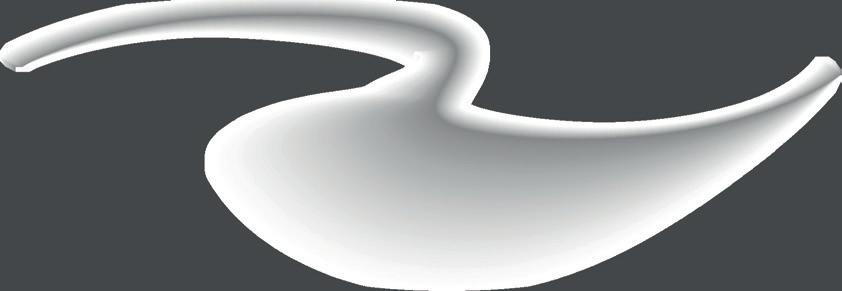
Stephen Neal (m. 1990), who was a projectionist for Christ’s Films, remembers similar incidents – some more dangerous than others. ABBA – The Movie snapped goodness knows how many times.’ he says. ‘I also got an electric shock from a dimmer control in the projection booth... I think some fluff stuck on splicing tape caught fire too...’
Ian and Sam Holloway (m. 1997) both recall their race to find the film for a showing of Chicken Run fondly. ‘For the new release films, it was sometimes touch-and-go whether they’d arrive in time,’ recounts Sam. ‘We were due to show Chicken Run and the film didn’t arrive. We were told by the distributor that we could go collect it ourselves from the Grafton Centre cinema who had just finished showing it.’ Ian remembers that they then ‘wandered over, had a lovely chat with their projectionist (who showed us how a proper multiplex projection room works) and walked out with 8,000 feet or so of Chicken Run.’ Adds Sam, ‘Three or four rolls of film filled an entire taxi
we had to walk back!’
David Smith (m 19 82), who ran the so ciety with tw o other undergraduates fr om 19 83–1984, remembers another narrowly-averted screening dis aster. In line with the policy he and his co -leaders tr ied to pursue of ‘b eing sl ightly of f the wall, not by picking cult mov ies bu t by gi ving ex posure to what we thought were for gotten masterpieces,’ the so ciety had pr ogrammed














Arthur Penn’s 1966 mo vie The Chase ‘It was filmed in 2:35 widescreen so we were horrified as the op ening cr edits rolled and we sa w that the pr ojectionist was showing it in the st andard Ac ademy ratio of 4: 3, making all the ac tors ten fe et tall and si x inches wide,’ David says. Although the pr ojectionist was at fir st reluctant to re set all of the equipment, ‘luckily he relented and the fil m was shown in its pr oper pr oportions.’
On another occasion, some members of the audience took it into their own hands to entertain the crowd as society members corrected a similar mistake. ‘Films were delivered as separate 40-minute reels that had to be taped together



into the complete film’ Ian says. ‘Unfortunately for both The Hunt for Red October and Zulu we managed to tape them in the order 1324. A contingent from the Officer Training Corp had turned up for Zulu and after 40 minutes came to politely inquire if we’d missed a bit of the film out – they’d seen the film a number of times before. While we corrected the error, the OTC re-enacted famous scenes from the film in the theatre to a delighted and bemused audience.’
For many members and non-members alike, Christ’s Films had a lasting impact. Penny Pullan (m. 1986) has happy memories of attending films – one of which inspired her to take a long-awaited trip. ‘I remember seeing Out of Africa in my first year, as a member of Christ's Films,’ she says. ‘The light and the vistas made me remember the years of childhood I’d spent in Africa. So I decided there and then that I would save up to travel out for the Christmas holidays in my second year, and I did!’
‘A good few of the films there became favourites, I guess for nostalgic reasons,’ says Sam. ‘I remember in particular watching Jackie Brown and becoming obsessed with the soundtrack and going to HMV in the Lion Yard (now long gone!) to buy the soundtrack CD the next morning. That started my love of soul music that I’ve had to this day.’
All remember Christ’s Films as a valuable part of the social fabric of College. Being part of the society ‘was a fantastic way of also meeting second- and third-year students when we matriculated,’ recalls Fiona De Araujo (m. 1986), who remembers creating handmade posters for showings and taking them to display at other Colleges. Ian also remembers Christ’s Films as ‘a great bunch of people,’ and David's involvement with Christ’s Films ‘was a pretty joyful experience and confirmed my burgeoning love of cinema in all its forms, warts and all.’ Concludes Stephen, ‘It was a great social occasion in the days when we weren’t allowed TVs in our rooms and couldn’t stream content on phones, laptops, tablets etc! Going to see a film once or twice a week was a highlight.’
“A GOOD FEW OF THE FILMS THERE BECAME FAVOURITES, I GUESS FOR NOSTALGIC REASONS.”
LADIES’ NIGHT AT CHRIST’S COLLEGE
You never know when you’ll stumble upon a piece of Cambridge history, something Jodie Coates (m. 2013), a PhD student in the Faculty of Education, learned for herself when she made an unexpected discovery in a second-hand book. Here, Jodie tells us about her find and the intriguing research it inspired her to carry out.

A bookmark, an old receipt, or a sweet wrapper are items you might expect to find abandoned between the pages of a second-hand book. What I stumbled upon in March was far more precious: a dinner menu from Christ’s College, dated ‘Thursday 16 December 1954’.
The menu had been slipped inside a copy of Jean Lindsay’s A Cambridge Scrapbook (1955), which I had bought as a gift for an overseas friend and Christ’s alumnus who was missing Cambridge. Lindsay’s collection of passages and poems nostalgically depict university life in between the two world wars, conjuring an ‘atmosphere of a gracious society where wit and hospitality have flourished together with much learning and not a little eccentricity’.1 Not only was my book signed by Lindsay, but the 68-year-old menu that fell into my lap hailed from my own College. I have been a member of Christ’s for almost a decade, first as an undergraduate, then as an MPhil student, and now as a PhD student. As such, I have enjoyed many formals at Christ’s and was delighted to find a paper surprise from times-gone-by hidden inside a book.
This menu was created for a specific event – ‘Ladies’ Night’. Christ’s Fellow AE Kempton explains that Ladies’ Nights were specially arranged ‘pleasant, formal, gracious occasions’, at which female guests were permitted to dine in Christ’s Formal Hall (a privilege normally reserved for the then all-male academics).2 Kempton recognises Peter Hirsch’s proposal to the Governing Body in 1965 to admit women to High Table as the first attempt to grant women any real status – an ‘acknowledgement, however remote and however muted, that the College owed its existence to Margaret Beaufort and not to either her uncle or son’. Fittingly, in the foreword of A Cambridge Scrapbook, Myra Curtis notes how ‘this year [1954] is specially memorable because it has seen in Cambridge the birth of a new collegiate foundation for women’: the Third Foundation, later New Hall, now Murray Edwards College.3 Jean Lindsay used her book to support the inclusion of women by donating all book-sale profits to New Hall.
Christ’s menus these days are printed on A4 paper and shared between a table. The Ladies’ Night menu, however, was folded to make a small, individual, cardboard booklet. The meal began with kidney soup and a fish course of sole ‘bonne femme’ (‘cooked in the manner of a good housewife’
perhaps a tongue-in-cheek nod to the evening’s unusual female company!). Roast turkey, with française potatoes and chicory au jus, was followed by Christmas pudding served with pink Camperdown sauce. A carafe of Cockburn’s Port was provided at the end of the night – a lasting custom at Christ’s to which I always look forward. Today, coffee is more often paired with a Ferrero Rocher than ‘Devils on Horseback’ (prunes and almonds wrapped in bacon), but it is striking to see that the rituals of Hall remain rather the same, almost seven decades on.
Flipping the menu on its back, I found a remarkable list of six handwritten signatures – three male fellows, and three invited ladies:
Frank Spooner – A 30-year-old recent PhD graduate, and one of a ‘glittering quintet of historians teaching at Christ’s College, Cambridge, in the mid-1950s’.4 Frank would go on to have a long and successful career in economic history and received a Doctor of Letters from Cambridge University.
John Brande Trend – A 67-year-old Professor of Spanish and Fellow of Christ’s, known to his students as ‘Prof ’ and associates as ‘JB’, who was living in G3 (Darwin’s rooms, before him). JB was an eccentric character, often seen wearing a ‘blue beret or a brown trilby hat’.5 He was a linguist, musician, and scientist, known for inspiring ‘great enthusiasm in his students’.6
Lucjan Ryszar Lewitter – A 32-year-old Director of Studies in Modern Languages for Christ’s College, and Lecturer in Slavonic Studies, who had completed his PhD on 17th-century Jesuit theatre at Christ’s three years before Ladies’ Night. Lucjan has been described as an elegant, open-minded historian, with a subtle sense of humour; a ‘true English gentleman in Cambridge’.7
I HAVE SPENT MANY EVENINGS RESEARCHING THE DINNER GUESTS’ HISTORIES AND IMAGINING THEM SITTING TOGETHER, EATING, DRINKING, AND DISCUSSING MUSIC, LANGUAGE, HISTORY, POLITICS, POETRY, AND THEATRE.
Helen Frances Grant
A 51-year-old Spanish Lecturer and recently appointed Fellow at Girton College. Helen graduated in French and Spanish from Somerville College in Oxford in 1930, and would likely have been taught by Enid Starkie, who had taken up the post of Lecturer in French Literature in 1928. JB Trend, who admired Helen’s work, had invited her to become a lecturer and supervisor at Cambridge in 1946.
Enid Mary Starkie (CBE)
A 57-year-old Fellow and Reader in French Literature at Somerville College at Oxford University. Like John, Enid was considered ‘eccentric and unpredictable’, but also ‘warm, tough, and intelligent’.8 Enid was once described in a Times article as ‘a brilliant Rimbaud scholar who pub-crawls about Oxford in bright red slacks and beret whilst smoking cigars.’9
I have spent many evenings researching the dinner guests’ histories and imagining them sitting together, eating, drinking, and discussing music, language, history, politics, poetry, and theatre. How well acquainted were they with each other? Who invited whom? The final mystery of this menu is how it ended up inside A Cambridge Scrapbook Lindsay read History at Girton from 1929–32, became a Girton Fellow and Lecturer in 1945, and published on Anglo-Spanish relations. Perhaps she knew Helen (a Girton Fellow), or JB (a Fellow of Spanish), or Frank (a fellow historian). Although entirely speculative, I like to think Lindsay was the seventh member of this party at Ladies’ Night and kept hold of the menu as a memento. This could well be her personal copy of A Cambridge Scrapbook

her signature is small, neat, and in a corner, implying personal use, rather than a signed copy intended as a gift.

A 71-year-old actress, singer, theatre producer, and proprietor of a boarding-house for French female students, who went by the nickname of ‘Pop’. Camille was living at no. 8 Scroope Terrace, on Trumpington Street
Camille Wilhelmine Prior
part of a house that was, and remains, home to the Faculty of Architecture and History of Art. Her late husband, Oliver Herbert Phelps Prior, was a Professor of French at St John’s College until his death in 1934.
In the book’s foreword, dated ‘Michaelmas Day, 1954’, Lindsay notes, ‘…this is how I hope Cambridge will appear to many of her sons and daughters… that memories of past generations may be kept vivid and that an essential part of education, religion, learning and research may continue to be freedom and friendship, wit and graciousness’. Next time I sit down for dinner in Hall, I must make sure to take a pen and ask my friends to sign the menu.
1. Lindsay, Jean. A Cambridge Scrapbook (Enlarged Edition) Cambridge: Heffer & Sons Ltd. (1955/1960). Inside cover.

2. Kempton, A E. More About the Admission of Women to the College. In Christ’s College Magazine (1997). P18.
3. Curtis, Myra. Foreword. In A Cambridge Scrapbook (Enlarged Edition) Cambridge: Heffer & Sons Ltd. (1960). PV.
4. McKendrick, Neil. Obituary: Professor John Kenyon. The Independent 10 January (1996). Online.
5. Vermont, D. N. Christ’s College Magazine (1954).
6. Anstee, Margaret Joan. An Unlikely Spanish Don: The Life and Times of Professor John Brande Trend GB: Sussex Academic Press. (2013).
7. Gömöri, George. Professor Lucjan Lewitter. The Independent 10 November (2007). Online.
8. Enid Starkie. Somerville, University of Oxford. Online.
9. "Education: Poetry & Politics". Time 24 February (1961).
SPOTLIGHT ON VOLUNTEERS: PROJECT ACCESS
From the application, to the interview, to choosing what to study, the process of applying to university can be intimidating for even the most well-supported students. As part of our series on volunteers, we spoke to students and staff members who are committed to increasing access to top universities through Project Access, a student-led organization that aims to demystify the application process for international students from all backgrounds.
Who better to help applicants navigate an often-challenging university application process than those who have been through it themselves? This idea is at the heart of Project Access, an organization founded in Denmark in 2015 to enable international students who have been successful in applying to top universities in the UK and the US to peer mentor students from their home countries and elsewhere who are hoping to do the same. Since its founding less than a decade ago, Project Access has grown to be international in reach with active in-country teams across Europe and Asia as well as a global support network.
In seeking out students to support, Project Access targets students who have a variety of academic interests and who do not have access to guidance on the international application process from their schools. ‘It’s about hitting those students who aren’t just at particular international schools, but are from any background,’ says Ellie Wood, who supports Project Access alongside her role as Admissions and Outreach Officer at Christ’s. ‘There are a lot of outreach programs that exist in the UK to target these kinds of
students, but nothing that really exists outside of the UK,’ adds Dr Emily Tomlinson, the Director of Admissions at Christ’s and a member of the Project Access board. Christ’s provides country-specific admissions information for applicants on the College website, but most of the hands-on support is UK-based.
Project Access aims to fill that gap for international students. ‘I remember being in the situation myself and how confusing it was to apply and scary and all of the worries I had feeling alien to the whole application process,’ recalls Ieva Petruskevicius (m. 2022), a first year Law student from Denmark who was mentored through Project Access while she was applying. ‘I think it’s important to support those students who have an ambition of going abroad who don’t have these resources.’
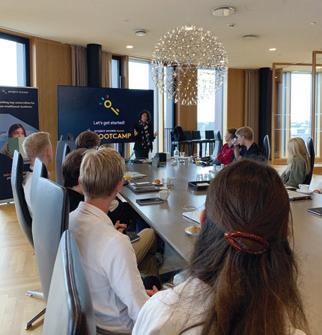
Simply having the information can be hugely influential in a student’s decision to apply to university outside of their home country, as a fourth year Natural Sciences student from Poland explains. ‘I didn’t know how all the funding worked in the UK and how interviews worked and so on, and Project Access were the ones to actually provide information about it,’ he says. If he hadn’t known about Project Access, he adds, he most likely ‘would have gone to a Polish university.’
Project Access runs a range of programmes, including the one-to-one peer mentoring scheme. Through this programme, a student who is already studying at university offers their mentee advice on the application process and the transition to studying in a new country ‘You get matched with someone who’s as similar to you as possible and usually a person from the same country as you,’ Ieva explains. Her mentor was a Danish student studying Law at Cambridge, just as she hoped to do. Now at Cambridge herself, Ieva is mentoring an aspiring Law student from Serbia, something she has found extremely rewarding. ‘It is my mission to help these students who are ambitious and who really want to challenge themselves and explore what the world has to offer,’ she says.
Oskari Peltonen (m. 2022), a first year Economics student from Finland, also worked with Project Access while he was applying and has remained involved with their work
now that he is at university. He first became involved with the organization through their annual country-specific bootcamps, another staple of Project Access’s outreach. After attending the annual Project Access bootcamp in Helsinki, Oskari applied to Cambridge with the organization’s support, and is now part of Team Finland, one of the thirteen country teams that implement Project Access’s mission across Europe and Asia. He is currently acting as the Head of Partnerships for the team, seeking out sponsorships to fund Project Access events. Martin Brogaard (m. 2020), a third year Economics student from Denmark, also became involved with his country’s team after getting to Cambridge with the help of a Project Access mentor, joining Team Denmark as the Marketing Officer during his first year at university ‘It’s always a great feeling to hear success stories from students that I’ve helped,’ he says. 'That’s a great way to confirm that what we are doing is worthwhile.’
For many international Christ’s students, the access work Emily and the Christ’s admissions team does was influential in their decision to apply to the College. ‘When I was on the Project Access bootcamp as a high school student in 2020, one of the presentations was by Emily,’ Oskari says. ‘That’s where my connection to Christ’s comes from and that’s why I’m here.’ Martin was similarly impacted by Christ’s active involvement in international outreach. ‘I was honestly really impressed with the dedication and the commitment to access that Christ’s had,’ he says, adding that he had come across Christ’s representatives, including Emily, at conferences he attended before applying to university ‘I got the impression that the Christ’s team was very competent in assessing my particular qualifications even though they’re not A levels or IB or anything like that. I felt like I was in safe hands applying here, and I think that’s very important.’
Emily credits Project Access and its student representatives for providing the resources to enable admissions officers to assess international qualifications. Access to this type of information is important in enabling Colleges and the University to put together a diverse mix of students, something Emily, and Christ’s, values. ‘The view that we hold at Christ’s is that students learn best and make the most progress when they’re surrounded by students from backgrounds that are different form their own,’ she says. ‘Diversity in every demographic within your student body helps every demographic within your study body. Hanging out with brilliant students from all different countries is a great experience whether you are British, or Danish, or Polish, or Indian – it’s a win all around.’
‘That’s really what we’re doing here at university – we’re thinking about what the world should look like,’ Ieva says. ‘When we finish here and go out into the world, what do we want to do and why? I think the answer to that lies in comparing different ways of doing things already, and you can only do that by having students from different cultures and backgrounds.’
The Natural Sciences student sees the work Project Access does as critical in ensuring that type of diversity continues in top UK universities after Brexit. ‘A lot of possibilities to get funding from the government have been lost, so things like Project Access are very important for the future.’
‘The better we are at equalizing access to top universities, the easier it will be for these universities to identify the students who have the potential to make the most of being here,’ sums up Martin. ‘The numbers have been going in the right direction and we have to keep fighting for that.’

OFT REMEMBERING CHRIST’S

Many alumni of the College shared their memories of Christ’s on the Donor Wall during our inaugural Giving Day. From the grounds to the people, here are just a few of the reasons our alumni chose to support Christ’s.
My time at Christ's opened doors for me throughout my life. Coming from an East London, predominantly working-class background, going to Christ's was an opportunity of a lifetime for which I will always be grateful. Thank you.
I have some truly wonderful memories of Christ’s. From feeling overwhelmed by the beauty of First Court when hand delivering my application, to having the privilege of living in what were once Milton’s rooms in my second year. Christ’s will always have a very special place in my heart.
I chose Christ’s because it was one of the first Colleges to go co-ed and I felt this was more important than the College’s academic record. My donation is a small thank you for the College having helped to break down discrimination back in 1979.
Wonderful memories of College 1970-1974, especially the footballers, fellow Marguerites, Lord and Lady Todd, and nights in the original Late Night Bar!
Christ's gave me so much – a home during two degrees, friends for life and many memories. I hope new students will come to love it too.
The beauty of First Court, the Chapel Choir, the Boat Club, the Minstrels, the sound of the College clock…

